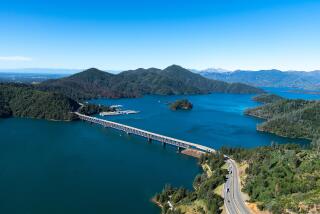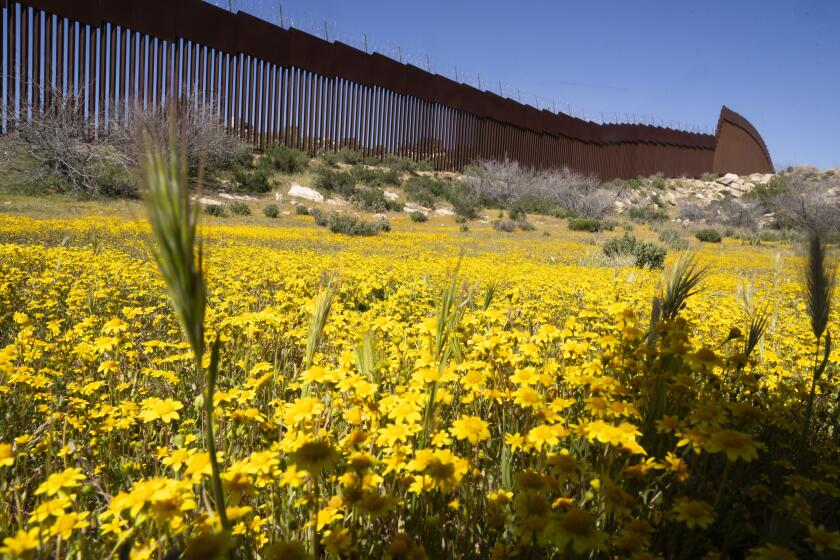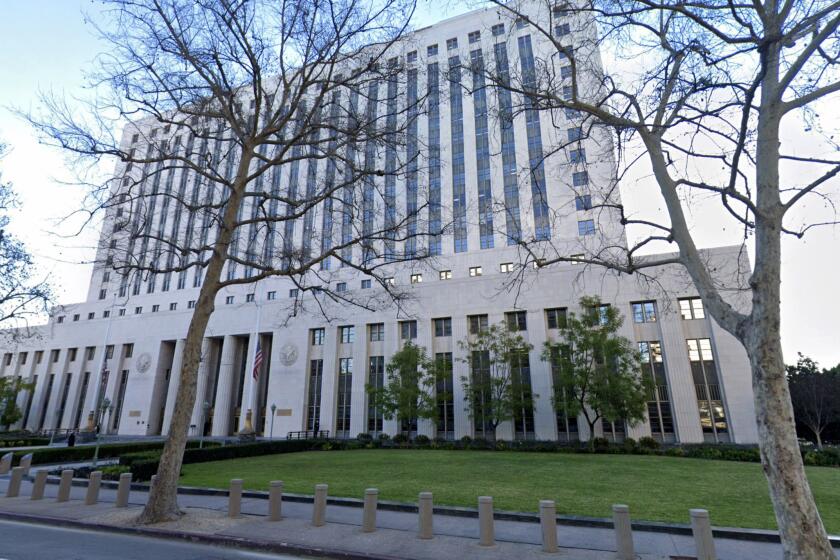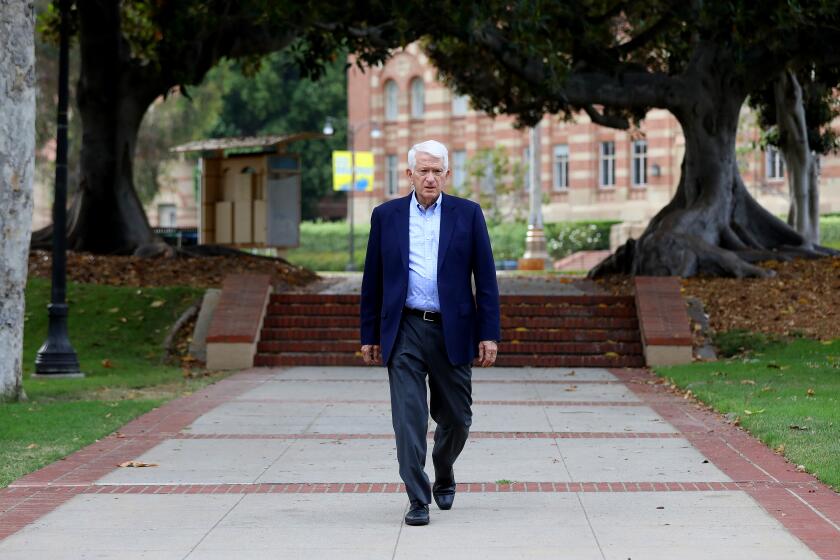Yosemite Plan Would Remove Many Structures
Officials of Yosemite National Park are set to unveil a master plan--20 years in the works--to substantially reduce traffic congestion, buildings, roads and other impediments to nature in the heart of the park.
Known as the Valley Implementation Plan, the project would reduce day-use automobile traffic by as much as 50% on peak summer weekends, eliminate hundreds of structures from Yosemite Valley by moving out offices and the bulk of employee housing, convert several miles of roads to meadows and bike paths, and return more than 140 acres of parking lots and asphalt to a natural state.
The plan to reshape Yosemite Valley--to be officially announced Wednesday at the park--grows out of the concern of Park Service officials, environmental groups and longtime visitors that the experience of one of the most dramatic settings in the world is being overwhelmed by the general hubbub, clutter, exhaust fumes and congestion of mass, mechanized tourism.
The plan, which will be the subject of a series of public hearings throughout the state, is being seen as a potential model for dealing with the problems of overcrowding--without limiting visitors--at many national parks.
*
At Yosemite, visitors coming for just one day would be required to park outside the park, or at the western edge of the valley, and take public transportation. About 4 million people visit the park every year, 90% of them having the valley as their destination--meaning that up to 7,000 cars crowd the seven-square-mile valley floor on a summer day.
The plan, which would cost from $140 million to $270 million, offers three broadly similar alternatives for the partial restoration of Yosemite Valley.
“This plan is the most important management decision facing the park in at least two decades,” said Chip Jenkins, chief of strategic planning at the park. “The decisions made in the next six months will shape Yosemite Valley well into the next century.
“The things we attempt to carry out will be closely watched by other national parks and protected areas around the world. That is why it is really important that we get it right.”
Among the plan’s strategies:
* The amount of lodging in Yosemite Valley would be reduced by about 20% and campground spaces by about an equal amount. Among the sites to be scaled down are Yosemite Lodge, Curry Village and Housekeeping Camp.
* The park’s headquarters would be moved out of Yosemite Valley to the nearby community of El Portal, as would the administration offices and executive housing for Yosemite Concessions Services.
* Roads through Cook’s, Stoneman and Ahwahnee Meadows would be removed. The roads are built on berms that park engineers believe obstructed the natural flow of water and contributed to severe flooding in the park last January. Parking areas for 2,500 day-use vehicles would be eliminated.
* The number of hiking and bicycling trails would be increased and protective buffers established--75 meters wide--along the banks of the Merced River.
Although the plan was slowly taking shape already, January’s flooding provided an unexpected incentive--about $190 million in recovery funds, a large portion of which can be used to move and replace structures and campgrounds.
National Park Service officials say that it will take up to 10 years to carry out the plan. First, they want to choose among the plan’s various alternatives by early next summer.
No matter which approach is chosen, the plan’s success will be tied to an ambitious attempt outside the park to put together a regional transit system to connect communities in the five counties surrounding Yosemite Valley.
*
The transit system, which is still on the drawing board, would require day-use park visitors to leave their cars outside the park and ride buses to a transit station to be built just inside Yosemite Valley.
From there, people would board vehicles that would take them to visitor destinations throughout the valley.
Jesse Brown, who chairs the five-county transportation group working to develop the system, said the target date to begin operating it is 2001.
If it is not running by then, the Valley Implementation Plan calls for building an 1,800-car parking lot in a mixed oak and conifer forest at Taft Toe or Pohono, which is the site of an old quarry.
During preliminary discussions, the parking lot emerged as one of the few controversial elements of the plan.
“Building a brand new parking lot at either location would erase a lot of the gains made by getting rid of housing and other unnecessary intrusions,” said Brian Huse of the National Parks and Conservation Assn., an environmental group that focuses on national parks.
The plan will be closely scrutinized by Yosemite Concessions Services, the company that operates most of the commercial services, including lodging and food service, in the park and that is expected to help pay some of the cost of carrying out the plan. “Overall, I think the plan is a good one, though there are a lot of unanswered questions,” said Gary Fraker, the company’s president.
Chief among those concerns is the cost of transferring much of the employee housing from the valley to El Portal.
The move is a multimillion-dollar obligation, Jenkins said, which the Park Service expects Yosemite Concessions Service to finance.
That means an added financial burden at a time when the company has seen revenues from the park fall by more than 25% as a result of last year’s flooding. After the downturn, the firm laid off a large number of employees and has been attempting to renegotiate a contractual obligation that requires it to pay 4.5% of gross receipts into a capital improvement fund.
“The removal of employee housing is an unfunded issue in our contract that will require some planning and some thought,” Fraker said.
(BEGIN TEXT OF INFOBOX / INFOGRAPHIC)
Yosemite Make Over
A plan to reduce traffic and congestion in the center of Yosemite National Park would relocate some buildings and campgrounds. Two parking lots would be moved outside the village.
Some of the Changes:
1. Yosemite Lodge: 55 units eliminated
2. Park Service headquarters: Moved out of park
3. Concession housing: Executive units relocated out of valley
4. River campgrounds: Relocated
5. Curry Village: Reduced in size
6. Housekeeping camp: Reduced in size
More to Read
Start your day right
Sign up for Essential California for news, features and recommendations from the L.A. Times and beyond in your inbox six days a week.
You may occasionally receive promotional content from the Los Angeles Times.






